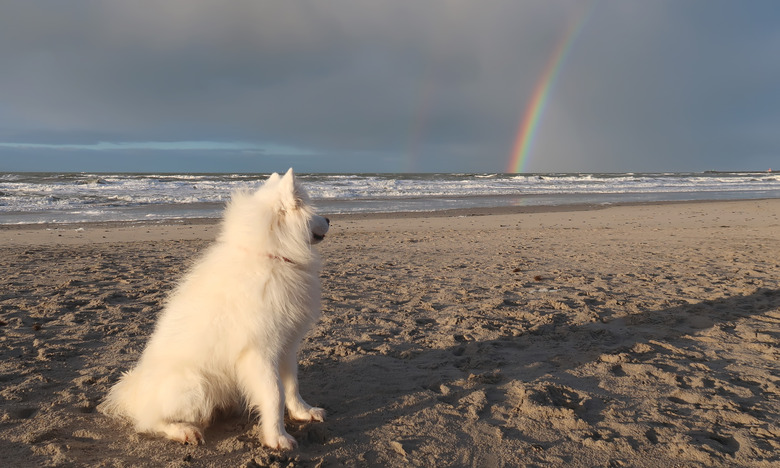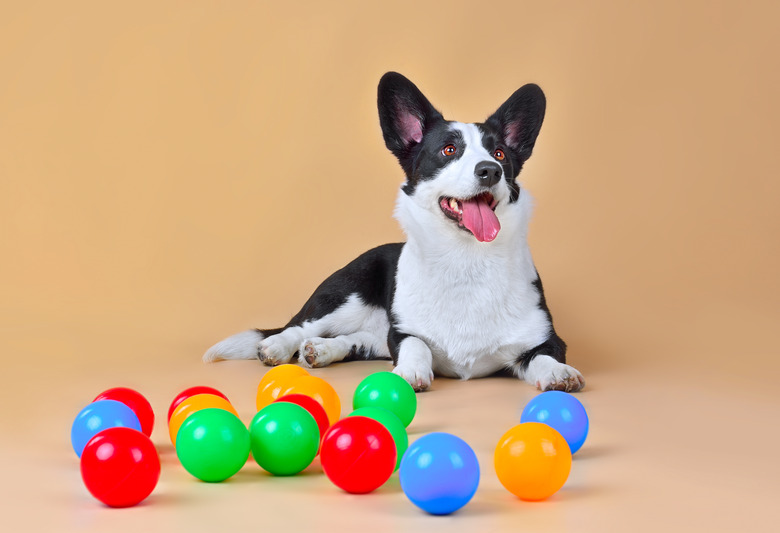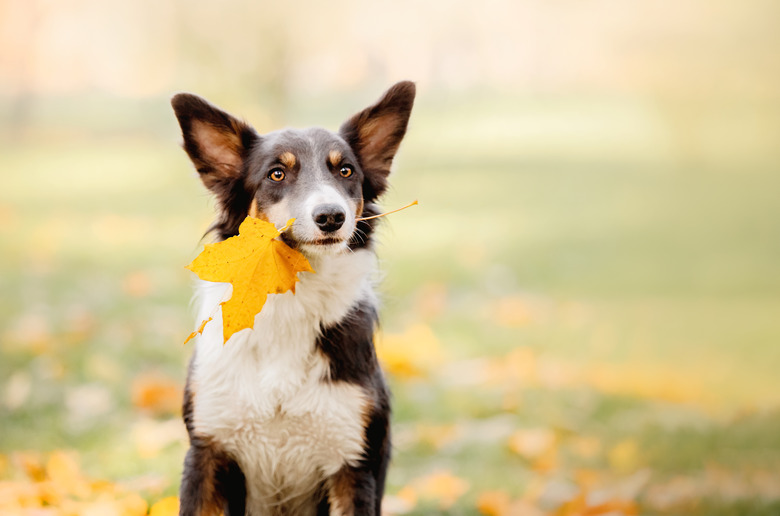Are Dogs Really Colorblind? What Colors Can They See?
You've probably heard that dogs can only see the world as if it were a black-and-white movie, but is that even true? As it turns out, no, it's not! Thanks to one dog training pamphlet written by Will Judy in 1937, the world has assumed that the canine eye has basically no range of color, but dogs can see color, albeit not as much as we do. Dogs may not be overwhelmingly known for their exceptional eyesight, but they can see different colors and are highly skilled at maneuvering in dim light settings because of how their eyes are designed.
Do dogs see color?
Do dogs see color?
Yes, they do! While it's been a long-held belief by many that dogs can only see in black and white, canines actually do have color vision, it's just not quite as broad of a spectrum as our own. The color perception abilities of a dog are more limited than our own because they have fewer cones in their eyes, which work with rods to send visual information to the brain. Rods and cones are nerve cells that live in the retina—rods help us see movement, while cones help us tell colors apart. Human eyes are trichromatic and have three types of cones that allow most of us to see the whole ROYGBIV array of colors. Dogs have dichromatic vision, meaning they only have two kinds of cones, giving them red-green color blindness, which some people also live with.
What colors do dogs see?
What colors do dogs see?
There are two types of colorblindness—red-green color blindness, and blue-yellow colorblindness. Dogs have the former, meaning that they can see yellow and blue tones the same way that we do. That's not to say that they can't see red and green at all, either, they just can't distinguish between the two, and those colors look a bit closer to brown or grey than how a non-colorblind person would view them. They can perceive other colors as well, like purple, orange, and indigo, just not in the same way that we do because the spectrum of colors they detect is limited due to their inability to see reds and greens.
So how do dogs navigate the world?
You don't need to be able to perceive the full spectrum of colors to get around, and many people are also red-green colorblind or have blue-yellow color blindness. Cats and dogs can actually perceive light beyond the white light spectrum than humans can as they can identify UV light. This makes it possible for dogs to see things that we can't see, which we often attribute to a sixth sense. What's really happening is that their eyes are able to detect the shorter light waves that exist just past the limits of white light, allowing them to see things like aroma molecules and dried urine.
Dogs also have better night vision, or vision in low-light settings, than we do, and their eyes contain more rods than our own, making them adept at spotting movement, even from far away. Both of these attributes allow dogs to move and hunt better during dawn and dusk hours, which is the perfect time for spotting and catching prey. The position of a dog's eyes on their head also gives them some advantages, including more peripheral range than animals with eyes in the fronts of their faces. So, just because a dog's vision doesn't match ours doesn't mean it's necessarily worse, in fact, it's designed to do exactly what they've needed it to do for thousands of years.
The eyes vs. the nose
The eyes vs. the nose
The eyes are just a secondary tool for dogs anyway. Our canine companions have a far superior sensory organ on them to help them get around without the use of color distinction—their noses. While a dog's sense of sight isn't the strongest of the animal kingdom, their sense of smell outranks that of a human by about 100,000 times. Their noses are filled with about 100 million olfactory sensory receptors compared to our 6 million, and this advanced trait helps them spot objects, find their way around, and keep themselves safe from potential danger. Even if your dog can't tell the red ball from the green ball by sight, they can usually tell them apart by smell.
The bottom line
The bottom line
Dogs are colorblind, but they don't only see in black and white. Dogs have fewer cones in their retinas than people do and cannot see red and green colors the same way that many of us do, but they can see yellows and blues. Dogs do have more rods than we do which allows them to pick up movement from far away, and their eyes are built to navigate low-light situations, making them more adept than us at seeing around dawn, dusk, and nighttime hours. While vision in dogs is limited within the white light spectrum, they can see UV light, which allows them to spot scent molecules that our human eyes cannot detect.




